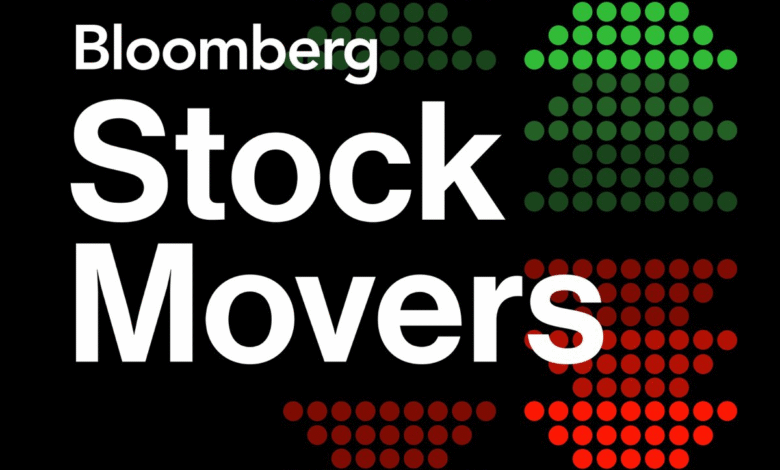Figma Stock Drop: Shares Fall 23% After IPO Surge

Figma’s stock drop has captured significant attention in recent stock market news, as the design software company faced a staggering decline of 23% after its recent IPO pop. Following an impressive first day of trading where Figma shares surged by 229%, the stock plummeted to $94.50 from a closing price of $122. The dramatic decrease signals potential volatility in the tech industry as investors reassess their positions in high-growth technology companies. With Figma’s market valuation soaring past $56 billion, the downturn raises questions about the sustainability of such rapid growth amidst broader market trends. As shareholders digest these changes, many are left pondering how this drop will impact Figma’s long-term future and its positioning within the technology sector.
In the fast-paced world of the stock exchange, Figma’s recent share price decline highlights key trends and shifts in investor sentiment. The tech enterprise, known for its cutting-edge design tools, saw its equity value tumble significantly after a robust initial trading period. This fluctuation invokes greater scrutiny on tech firms as they navigate a market characterized by both tremendous growth potential and inherent risks. Investors are now evaluating the company’s robust valuation against emerging industry challenges, considering how Figma’s journey will unfold in an evolving landscape of technology stock trends. As the market reacts to these developments, observers remain attuned to future opportunities and risks associated with Figma and similar tech entities.
Figma Stock Drops: Analyzing the Impact After the IPO Surge
Following a remarkable surge during its IPO, Figma shares experienced a significant drop, shedding over 20% of their value shortly thereafter. This sharp decline showcased the volatility often encountered in the stock market, especially for newly public technology companies. After closing the previous week at $122, the stock plummeted to $94.50, highlighting how quickly sentiment can shift. Investors likely recalibrated their expectations, realizing that the earlier enthusiasm maybe not be sustainable in the face of market realities.
The dramatic drop in Figma’s stock price also raises questions about overall investor confidence in tech IPOs. While the initial trading days are typically characterized by exuberance, the subsequent sell-off suggests that some investors may fear overvaluation. With Figma’s valuation reportedly soaring to an astounding $56 billion after the IPO, many market analysts are now scrutinizing whether such figures are justified and sustainable in the long run, especially amid fluctuating market conditions.
Understanding Figma’s IPO and Subsequent Stock Market News
Figma’s IPO was initially celebrated as a major victory in the tech sector, with shares tripling on the first day of trading. Investors were eager to capitalize on the company’s innovative design software, which has garnered significant market share among technology companies. The impression of a thriving business model led to an initial valuation that far exceeded even the proposed acquisition price by Adobe, which had been met with regulatory scrutiny. However, as stock market news continues to unfold, the narrative has shifted as analysts consider Figma’s long-term growth potential and market stability.
In the aftermath of its IPO, Figma’s share price fluctuations have drawn attention to the broader implications for future technology IPOs. The tech sector has seen a resurgence in investor interest, yet high-profile drops like Figma’s remind stakeholders of the risks associated with such investments. As companies prepare to enter the public market, they must navigate not only their internal valuation but also the expectations and sentiments of the stock market to avoid the pitfalls of rapid price corrections.
The Valuation of Figma: What Lies Ahead?
Figma’s fully diluted valuation now stands at approximately $56 billion, positioning it as a significant player in the tech industry. This figure is a remarkable leap from the initial proposed acquisition price by Adobe, which faced opposition and ultimately did not materialize. The contrast between the two valuations reflects the high aspirations that investors have for Figma based on its innovative offerings and market adoption. However, maintaining this level of valuation will depend on continued growth and market penetration in a competitive landscape.
As Figma navigates its post-IPO journey, it must focus on showcasing consistent performance while adapting to market demands. Analysts will be watching closely to see if Figma can sustain its high valuation amidst increasing competition in the software design space. Innovations and strategic partnerships could play a crucial role in affirming its market position. The challenge lies in not only retaining investor confidence but also demonstrating that it can deliver on the promise that fueled interest during its IPO.
Figma Shares and Market Volatility: A Cautionary Tale
The recent volatility surrounding Figma shares underscores the unpredictable nature of the stock market, particularly after an IPO. Although the initial enthusiasm led to a dramatic rise—where Figma shares soared 229% at launch—investors must remain cautious. Such spikes can often be followed by sharp corrections, suggesting the importance of thorough analysis and understanding market dynamics before making investment decisions. Figma’s experience serves as a reminder that high-growth technology companies, while promising, come with inherent risks.
Navigating the stock market requires not just optimism about a company’s prospects but also realistic appraisal of its market position. Figma shares’ recent decline indicates that short-term volatility can sway investor sentiment, leading to quick sell-offs even in high-potential companies. For those involved in trading technology stocks, it’s crucial to seek information from reliable market news sources and conduct diligent research to better anticipate movements and make informed decisions.
Insights on Figma’s Leadership and Future Direction
Dylan Field, the CEO of Figma, currently possesses more than $5 billion in stock holdings following the company’s IPO. This substantial stake not only highlights his commitment to the company but also positions him as one of the latest tech billionaires born from the thriving digital innovation space. His leadership will be pivotal in steering Figma through post-IPO challenges, particularly in maintaining investor interest and expanding its product offerings to sustain growth.
As Figma looks to the future, Field’s vision will likely involve leveraging its strong market presence to push the boundaries of design technology further. This could involve innovative features, enhanced user experiences, and possibly diversifying product lines. However, securing Figma’s place as a leader in the design software industry will also require a keen focus on customer feedback and adapting to the rapidly evolving landscape of user needs.
Comparative Analysis of Figma and Other Technology Companies
Figma’s recent IPO and valuation place it in a competitive tier alongside other leading technology companies. The astronomical rise in shares and subsequent correction elicit parallels with notable tech IPOs in recent years. Many other technology firms have navigated similar paths where bullish fronts in the early days give way to corrections as the market reevaluates growth prospects. Understanding these dynamics can provide investors with critical insights into Figma’s position relative to its peers.
This comparative approach allows for a deeper analysis of market trends affecting IPOs and tech valuations. Figma’s unique offering in design software provides a competitive edge, but ongoing evaluation of its ability to scale compared to established players will be vital. Therefore, observing how companies within the tech sector respond to market fluctuations and adapt to broader economic conditions will be crucial for assessing Figma’s future trajectory.
Investor Sentiment Towards High-Growth Tech IPOs
The recent fluctuations in Figma stock reflect a broader trend of shifting investor sentiment regarding high-growth technology IPOs. While initial enthusiasm often drives stock prices up, the same excitement can lead to rapid sell-offs when reality sets in. Investors tend to re-evaluate the long-term sustainability of valuations post-IPO, especially when a company’s financial health is questioned or market competition intensifies.
Through understanding current market attitudes, investors can gain insights into how quickly they should react to stock movements in tech companies like Figma. Those with a vested interest in high-growth sectors need to develop strategies that account for both potential gains and losses, incorporating risk management tactics that can help stabilize their portfolios in times of volatility.
Figma and the Future of Design Software
As Figma moves forward, it must capitalize on the momentum gathered from its IPO while addressing the challenges of sustainability in the design software landscape. The ability to innovate and develop new features will be critical to fend off competition from emerging rivals and established players alike. Figma’s focus on collaborative tools and user-friendly design frameworks distinguishes it but must continually evolve to meet customer demands and expectations.
The future of design software holds immense potential, with Figma positioned at a crucial junction. Companies that adapt quickly to technological advancements and user feedback can better secure their foothold in an increasingly digital world. By building a robust product pipeline and engaging effectively with their user communities, Figma has a real opportunity to not only maintain but expand its market share.
The Role of Market Analysts in Evaluating Figma’s Performance
Market analysts play a vital role in assessing the performance of companies like Figma, providing investors with data-driven insights to navigate investment decisions. Their analysis often includes evaluations of financial health, market trends, and competitive positioning. As Figma experiences stock volatility, the insights from analysts can help contextualize these movements, assisting investors in making informed choices regarding buying, holding, or selling their shares.
Additionally, analysts monitor broader industry trends impacting Figma and similar tech companies. This dimension of evaluation can illuminate potential challenges or opportunities stemming from regulatory changes, market competition, or shifts in consumer preferences. As such, proactive engagement with analytical insights is invaluable for stakeholders looking to understand the broader implications of stock performance in the tech sector.
Frequently Asked Questions
What caused the Figma stock drop after its IPO?
The Figma stock drop can be attributed to profit-taking by investors following a significant increase in share price during its IPO. After skyrocketing 229% to a high of $122, the shares fell 23% to $94.50 on Monday, which indicates a normal market correction after an IPO pop.
How did Figma’s valuation change after the IPO?
Figma’s valuation soared to approximately $56 billion following its IPO, significantly surpassing the $20 billion valuation from its abandoned merger with Adobe Inc. However, the subsequent stock drop affects this valuation perception in the stock market.
What is the significance of Figma shares’ performance in the stock market news?
Figma shares’ performance, particularly a 23% drop after an IPO pop, is highly significant in stock market news as it reflects broader trends related to the technology sector’s volatile nature and investor sentiment towards high-growth companies.
Will the Figma stock drop affect investor confidence in technology companies?
Yes, the Figma stock drop may impact investor confidence in technology companies, especially those with volatile stock performance post-IPO. Investors often closely monitor such stocks for trends that can influence their future investment decisions.
What implications does the Figma stock decline have for its future growth?
The Figma stock decline could serve as a wake-up call for the company’s management to focus on sustainable growth strategies. However, the significant initial valuation and demand for Figma’s design software imply that long-term growth prospects remain strong despite the short-term drop.
How many shares of Figma were sold during the IPO and what was the price?
During the IPO, approximately 37 million shares of Figma were sold at $33 each, generating around $412 million in proceeds for the company, setting a strong foundation for its market debut despite the recent stock drop.
What are the future outlooks for Figma after the recent stock drop?
Despite the recent stock drop, Figma has a robust future outlook due to its innovative product offerings and strong demand within the design software market. Analysts expect the company to stabilize and possibly rebound as the market adjusts to its valuation and performance.
How does the Figma IPO fit into trends for technology companies?
The Figma IPO reflects a renewed interest in technology companies, especially after a sluggish IPO period. Its initial success, followed by a stock drop, highlights the volatile yet promising nature of tech investments in today’s market.
| Key Points |
|---|
| Figma shares dropped 23% on Monday, reducing IPO gains. |
| Figma shares surged as much as 229% post-IPO. |
| Approximately 37 million shares sold at $33 each, generating $412 million. |
| First-day trading saw shares more than triple, reviving interest in tech IPOs. |
| Figma’s valuation stands at approximately $56 billion, following IPO. |
| CEO Dylan Field’s stock valued at over $5 billion post-decline. |
Summary
The Figma stock drop has significantly impacted the company after an explosive IPO, highlighting the volatility and unpredictability of stock markets. Following a promising start where Figma shares soared over 229% to a valuation exceeding $56 billion, the recent decline demonstrates that such peaks can be followed by steep drops. As Figma navigates this challenging phase, it serves as a reminder of the importance of stability in the tech sector.




